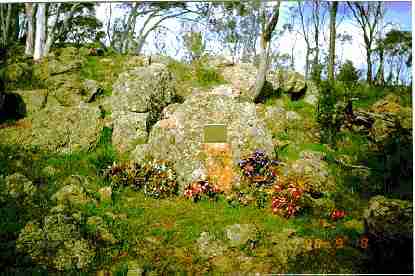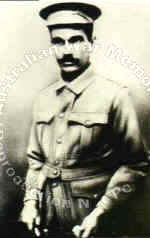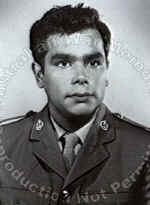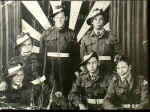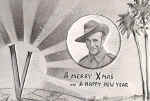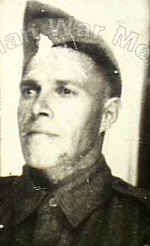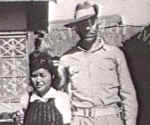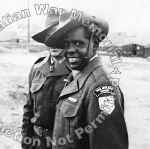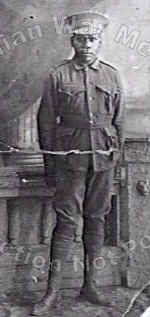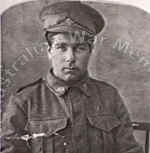 |
|
|||
|
|
||||
| If your belief is that viewing photos of a deceased person is disrespectful, bad, wrong or shameful please move off this page, now. |
|
Wangaratta, Vic. 1940-12. Aboriginal soldiers from the special platoon consisting of aboriginal soldiers, all volunteers, at Number 9 Camp at Wangaratta. V85813 Major Joseph Albert (Bert) Wright, a World War 1 Light Horse veteran, was in charge of this Platoon, which was the only all-Aboriginal squad in the AMF (Australian Military Forces). (Donor S. Clarke) >>>>>>> |
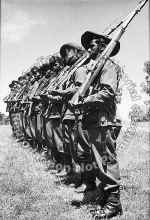 |
|
|
See the Reg
Saunders MBE page. |
||
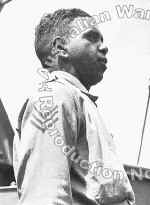 |
1940-09.
Somewhere at sea. Sergeant Reg Saunders - the
aboriginal soldier is held in excellent regard by both officers and men,
and is one of the smartest men in the company. (negative by R.
Williams).
Reg Saunders was born in 1920, in Purnum, Victoria, near the Framlingham Aboriginal Reserve. He came from a long line of soldiers. Both his father and his uncle served in the First World War. His uncle, Wm. Reg Rawlings, for whom he was named, received a Military Medal for action at Morlancourt Ridge, France. Rawlings was killed in action at Vauvillers, in 1918 >> |
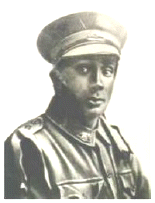
Wm. Reg Rawlings MM |
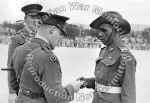 |
Seymour, Vic. 1944-11-25. Lieutenant R. W. Saunders, 2/7th Infantry Battalion (1), receives his stars from Lieutenant General J. Northcott (3), during the graduation ceremony of course No. 14 held at the Infantry Wing, Officer Cadet Training Unit Seymour, Lieutenant Saunders was the first aboriginal to obtain a commission in the Australian forces. At the background stands Lieutenant Colonel J.A. Wilmoth, Commandant (2). | |
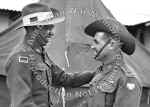 |
Seymour, Vic. 1944-11-25. Lt T.C. Derrick, VC DCM (right) shaking hands with Lt R.W. Saunders (left), as they congratulate each other following their successful graduation from the Officer Cadet Training Unit at Seymour. Lieutenant Saunders was the first aboriginal commissioned in the Australian army. | |
 |
Captain (Capt) Reg Saunders (right), commander of C Company, 3rd Battalion, The Royal Australian Regiment (3RAR), shakes hands with a member of K Company, 19th Regimental Combat Team (RCT), 6th Republic of Korea (ROK) Infantry Division, which has just arrived on Salmon to relieve 3RAR. A few days after the handover, the ROK troops abandoned the hill when Chinese forces attacked. Capt Saunders was the first Aboriginal serviceman to command a rifle company. (Donor I. Robertson) | |
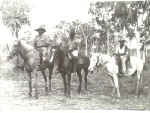 |
Northwest Australia. 1943-02-01. To provide fresh meat for allied soldiers in the north west area the army established its own slaughter yards, cooling chambers and delivery system about 10 miles north of Katherine. Butchers from the army resumed civil occupation, on army pay, and aboriginal labour was used to bring the cattle into the slaughter yards from widely dispersed areas. Three of the aboriginal stockmen are shown here, from the left they are, Bobby of the Alligator tribe, Paddy of the Myall tribe and John Buckley (12 years old) of the Alligator tribe. (negative by H. Turner). | |
| Some (an unknown number) of aboriginal soldiers served in the first AIF. Many aboriginals hid or tried to hide their ethnic origin, claiming to be Maori or Islander in an attempt to avoid the bureaucracy that wanted to "protect" them and the contempt of some (only some) white Australians who looked down on "Abos" but not (to the same degree) on other dark skinned races. |
|
|
"Remembering the Aboriginal people who served in the Australian forces"
|
| This memorial is on public land - at the base of Mount Ainslie behind the Australian War Memorial in Canberra, ACT. It was placed there by a local non-Aboriginal citizen several years ago. | |
|
"THE COLOURED DIGGER"
|
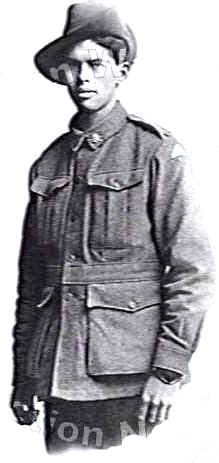
Unidentified WW1 aboriginal servicemen |
|
(By Sapper Bert Beros, a non-Aboriginal soldier in WW2, about an Aboriginal soldier, Private West). |
|
 |
Aboriginal soldier 370 Private Reginald Francis Hawkins, 6 Company, 42nd Battalion, twenty three years old, a station hand from Jericho, Queensland, who was captured at Armentieres on 1917-02-16. Private Hawkins is the brother of the Roughrider (horse-breaker) Harry Hawkins of 2nd Remount Unit. note . . .this is an extract from the AWM site. As there was no 6 Company I suspect that the reference is a typo. Either 6 Platoon or B Coy. Hawkins gets a special mention here because he served with my Dad in the 42nd Bn. |
